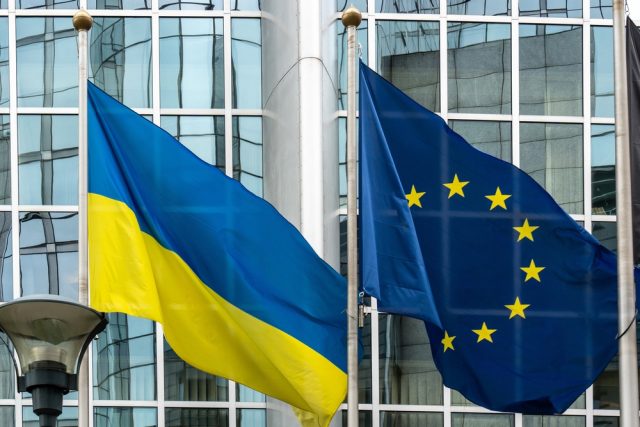
How the EU’s 24-point plan diverges sharply from the U.S.–Russia framework and aligns with Kyiv’s core demands
The European Union has unveiled a draft peace proposal for Ukraine that stands as a deliberate, substantive alternative to the plan advanced by former U.S. President Donald Trump. Although the EU document contains 24 points—four fewer than its American counterpart—the difference lies not in length but in philosophy, priorities, and political implications. Where the U.S.–Russia framework sought a negotiated compromise balancing territorial control and security limits, the European counterplan positions itself firmly in support of Ukraine’s sovereignty, security, and long-term independence.
Five of the 24 points are devoted to what Brussels views as the essential starting point for any political process: a complete, unconditional ceasefire, and a robust system to monitor violations. The monitoring mechanism would involve both U.S. and European officials, reflecting a conviction that stability must be guaranteed by a broad coalition of Western partners rather than through bilateral arrangements that risk favoring Moscow. This insistence on international oversight marks a departure from more transactional approaches, emphasizing accountability, transparency, and the creation of a verifiable security environment on the ground.
Humanitarian issues form the second major pillar of the European plan. Three specific points address the return of Ukrainian children removed from their families, the implementation of an all-for-all prisoner exchange—including civilians—and the organization of supervised reunions for families separated along the contact line. These provisions are not peripheral: they reflect the EU’s contention that a durable peace must begin with the restoration of human dignity and the rectification of the war’s most personal injustices. Unlike proposals that prioritize rapid political settlement over social repair, the European framework places humanitarian redress at the heart of its peace architecture.
The most expansive—and politically weighty—section comprises 12 points concerning Ukraine’s sovereignty and security guarantees. It is here that the divergence from the Trump plan becomes unmistakable. The EU explicitly rejects the idea of Ukrainian neutrality, a centerpiece of the U.S.–Russia proposal, arguing instead that Kyiv must retain the sovereign right to determine its alliances. The plan includes a commitment by Ukraine’s allies to intervene in its defense in the event of renewed aggression, modeled on the collective defense principle of NATO’s Article 5. While not formal membership, this framework envisions binding obligations that would significantly strengthen Ukraine’s deterrence posture.
The European document also refuses Russia’s demand to impose a cap on the size of Ukraine’s armed forces—another key difference from the American blueprint. In Brussels’ view, restricting Ukraine’s military capacity would undermine its ability to defend itself and create a precedent rewarding coercion. On the question of NATO accession, the EU reiterates a longstanding principle: decisions about enlargement belong solely to the Alliance’s members, not to external actors. This explicit denial of Moscow’s veto power is one of the clearest expressions of the EU’s commitment to Ukraine’s sovereign autonomy.
Territorial issues further illustrate the divide. While the European plan acknowledges the realities on the ground, it does not recognize Russia’s sovereignty over the occupied territories, nor does it require Ukraine to relinquish the remaining free areas of the Donbas. This stands in stark contrast to the
Trump plan, which envisaged de facto acceptance of Russian control in exchange for immediate de-escalation. The EU also rejects the American proposal to divide the energy produced by the Zaporizhzhia nuclear power plant between Russia and Ukraine. For Europe, the principle is unequivocal: the plant must be returned to Kyiv’s authority, both for legal and safety reasons.
The final component of the European counterproposal addresses reconstruction—an issue that has grown increasingly urgent as the war’s economic and infrastructural toll mounts. The EU plan stipulates that if Russia refuses to pay reparations, reconstruction should be funded through frozen Russian assets held in Europe. This approach signals a readiness to leverage financial instruments already under EU control while preserving the legal argument that Russia bears responsibility for the damage it has inflicted.
Taken together, the EU’s 24-point plan is not merely a diplomatic alternative—it is a strategic statement. It aligns with Kyiv’s core demands, rejects concessions that would institutionalize Russian gains, and outlines a framework for security, justice, and reconstruction rooted in international law. Far from mirroring the U.S.–Russia plan, the European proposal turns it on its head, offering a path forward that prioritizes sovereignty over expediency and principles over pragmatism.



 Subscribe
Subscribe